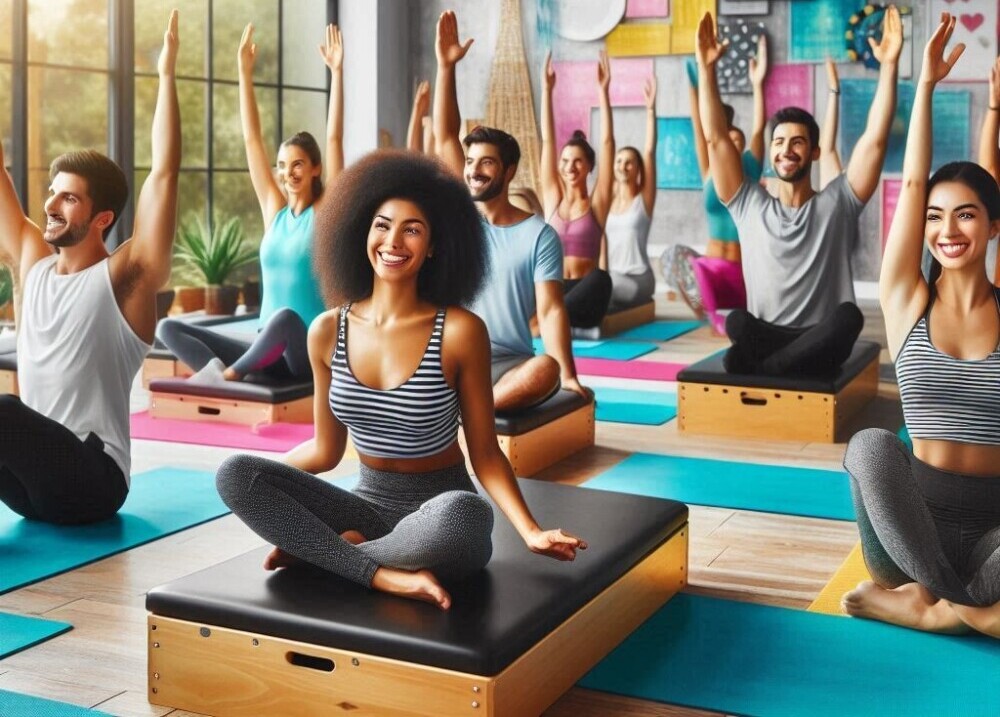Improve Posture with Pilates: A Holistic Approach to Alignment and Strength

Good posture is essential for overall health, reducing strain on muscles and joints while promoting better movement and energy flow. However, in today’s digital age, many people struggle with poor posture due to prolonged sitting, incorrect alignment, and lack of core strength. Pilates, a form of low-impact exercise, offers an effective and sustainable way to improve posture by strengthening core muscles, increasing body awareness, and enhancing flexibility. This article explores how Pilates can help correct postural imbalances and create a more aligned, pain-free body.
Understanding Posture and Its Importance
Posture refers to the alignment of the body while standing, sitting, or lying down. Good posture ensures that the spine remains in a neutral position, minimizing stress on muscles and joints. Poor posture, on the other hand, can lead to chronic pain, decreased mobility, and long-term musculoskeletal issues.
Common postural problems include:
- Forward Head Posture: Characterized by the head jutting forward, often due to excessive screen use.
- Rounded Shoulders: A result of prolonged desk work, leading to tight chest muscles and weak upper back muscles.
- Anterior Pelvic Tilt: Occurs when the lower back is overly arched, often due to weak core and tight hip flexors.
- Hunchback Posture (Kyphosis): Excessive curvature of the upper spine, leading to a slouched appearance.
By addressing these imbalances through targeted exercises, Pilates can restore optimal alignment and improve overall posture.
How Pilates Improves Posture
Pilates is built on six core principles: concentration, control, centering, precision, breath, and flow. These principles encourage mindful movement, which is key to postural correction. Here’s how Pilates specifically benefits posture:
1. Strengthens the Core
The core, which includes the abdominals, obliques, lower back, and pelvic muscles, is crucial for maintaining an upright posture. A strong core stabilizes the spine and prevents slouching. Pilates exercises such as the Hundred, Plank, and Rolling Like a Ball help engage and strengthen these muscles, providing the necessary support for proper alignment.
2. Improves Spinal Mobility and Alignment
A flexible and mobile spine is essential for good posture. Pilates exercises focus on articulation and controlled movements, allowing the spine to move freely without stiffness. Moves like Cat-Cow, Spine Stretch Forward, and Rolling Up enhance spinal mobility and encourage proper vertebral alignment.
3. Increases Body Awareness
One of the key aspects of Pilates is developing body awareness. Many people are unaware of their poor posture habits. Pilates encourages mindfulness in movement, helping individuals recognize when they are slouching or holding tension. By consistently practicing Pilates, one becomes more conscious of their alignment, even outside of exercise sessions.
4. Strengthens the Postural Muscles
Postural muscles, including the trapezius, rhomboids, and erector spinae, play a vital role in maintaining upright posture. Pilates exercises like Reverse Plank, Single Leg Stretch, and Swan Dive target these muscles, preventing the common hunched-back appearance associated with poor posture.
5. Enhances Flexibility and Reduces Tension
Tight muscles can pull the body out of alignment. For example, tight chest muscles contribute to rounded shoulders, while tight hip flexors lead to an anterior pelvic tilt. Pilates incorporates stretching exercises like Chest Opener, Hip Flexor Stretch, and Child’s Pose to release tension and improve overall flexibility.
Pilates Exercises to Improve Posture
Here are some specific Pilates exercises that target postural alignment:
1. The Hundred
- Lie on your back with legs lifted at a 45-degree angle.
- Lift your head, neck, and shoulders off the mat.
- Pump your arms up and down while inhaling for five counts and exhaling for five counts.
- Repeat for ten cycles.
This exercise strengthens the core, supporting a straight and stable spine.
2. Spine Stretch Forward
- Sit with legs extended and feet flexed.
- Inhale and lengthen the spine.
- Exhale and reach forward, keeping the spine elongated.
- Hold for a few seconds and return to starting position.
This stretch improves spinal mobility and corrects forward head posture.
3. Shoulder Bridge
- Lie on your back with knees bent and feet hip-width apart.
- Press through your heels to lift your hips, forming a straight line from shoulders to knees.
- Lower down slowly with control.
This movement strengthens the glutes and lower back, promoting better pelvic alignment.
4. Swan Dive
- Lie on your stomach with hands under shoulders.
- Inhale and lift your chest while keeping shoulders relaxed.
- Exhale and lower back down with control.
This exercise strengthens the upper back, reducing rounded shoulders and improving overall posture.
5. Cat-Cow Stretch
- Start in a tabletop position with hands under shoulders and knees under hips.
- Inhale and arch the back, lifting the head (Cow pose).
- Exhale and round the spine, tucking the chin (Cat pose).
This movement enhances spinal flexibility and relieves tension from prolonged sitting.
Tips for Integrating Pilates into Daily Life
To maximize the benefits of Pilates for posture improvement, consider these tips:
- Practice Regularly: Aim for at least three Pilates sessions per week.
- Be Mindful of Posture Throughout the Day: Check your alignment while sitting, standing, and walking.
- Strengthen Supporting Muscles: Incorporate resistance bands or small weights to enhance muscle engagement.
- Combine Pilates with Other Activities: Yoga and functional strength training complement Pilates and further improve posture.
Final Thoughts
Pilates offers a sustainable and effective way to improve posture by strengthening core muscles, increasing body awareness, and enhancing flexibility. Through consistent practice, individuals can correct postural imbalances, relieve discomfort, and develop a more aligned and confident posture. Whether you’re dealing with forward head posture, rounded shoulders, or an anterior pelvic tilt, incorporating Pilates into your routine can lead to long-term benefits for your posture and overall well-being.
